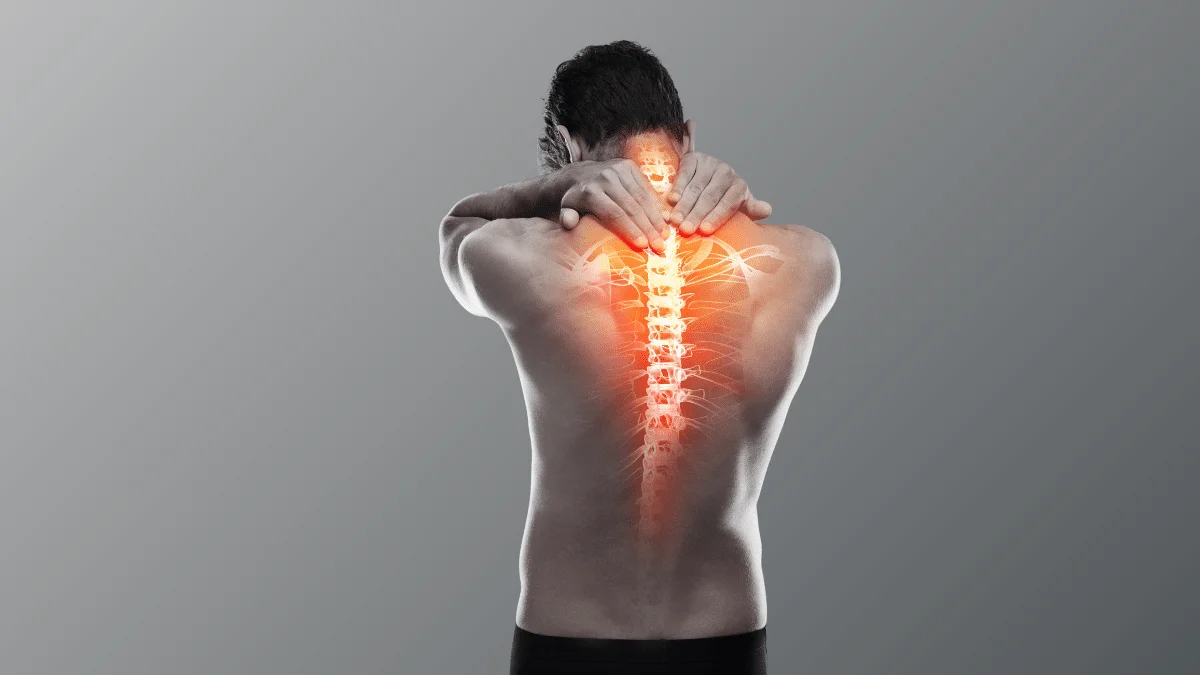
Renowned singer Sonu Nigam recently experienced severe back pain just before his concert in Pune. The discomfort, which he described as an excruciating spasm, affected his ability to move freely. Despite the pain, the singer continued his riyaz while receiving reflexology treatment from a practitioner. A video he shared on social media showed him stepping down from the stage while his team assisted him in stretching to ease the discomfort.
Table of Content:-
Sonu Nigam’s episode has brought attention to the common yet often overlooked issue of back spasms. Let’s understand what a back spasm is, its causes, symptoms, and effective treatment options to help prevent and manage this painful condition.
View this post on Instagram
What Is a Back Spasm?
A back spasm occurs when the muscles in the back involuntarily contract, tighten, or twitch, leading to significant pain. These spasms can happen suddenly and range from a mild ache to intense, crippling pain. The muscles in the upper, middle, and lower back are categorized into three types:
- Intrinsic or deep muscles
- Superficial muscles
- Intermediate muscles
Although lower back spasms are more common, spasms can occur in any part of the back. According to experts, nearly 80% of people worldwide will experience some form of back pain at least once in their lifetime.
What Causes Back Spasms?
Back spasms can result from various factors, ranging from lifestyle habits to underlying medical conditions. Some of the most common causes include:

Lack of Movement & Poor Posture
- Sitting for extended periods without movement can weaken back muscles.
- Poor posture while working, driving, or sleeping can lead to muscle strain.
Overuse of Muscles
- Engaging in intense physical activity, gym workouts, or sports can lead to muscle fatigue and strain, increasing the risk of spasms.
- Lifting heavy objects incorrectly can also cause muscle tears and spasms.
Also Read: World Cancer Day 2025: Bollywood Celebrities Who Successfully Fought The Deadly Cancers
Nutritional Deficiencies
- Dehydration and deficiencies in essential minerals like potassium and calcium can contribute to muscle cramps and spasms.
- A lack of magnesium can also trigger muscle contractions.
Stress & Mental Health Issues
- Anxiety and chronic stress can tense up the muscles, causing them to spasm unexpectedly.
- Poor sleep and high cortisol levels may worsen muscle tension.

Underlying Medical Conditions
While many back spasms result from lifestyle habits, some could be symptoms of serious health issues such as herniated discs, arthritis, gallstones or kidney stones, Infections or tumors, etc.
Signs & Symptoms of Back Spasms
A back spasm may start as a mild twitch and gradually build up to severe, sharp pain. In some cases, the pain can be debilitating and restrict movement. If you experience any of the following symptoms along with a back spasm, seek medical attention immediately:
- Loss of bladder or bowel control
- Numbness, tingling, or weakness in the arms or legs
- Loss of balance or coordination
- Persistent or worsening pain
How to Treat Back Spasms
Fortunately, back spasms can be managed effectively with self-care techniques and medical treatment.
Rest & Gentle Movement
Avoid sudden movements that can worsen the pain, and engage in gentle stretches to relax the muscles.

Ice & Heat Therapy
Apply an ice pack or heating pad wrapped in a towel to the affected area for 20-30 minutes at a time. Cold therapy helps reduce inflammation, while heat therapy relaxes the muscles.
Over-the-Counter Pain Medications
Nonsteroidal anti-inflammatory drugs (NSAIDs) like ibuprofen or acetaminophen can help alleviate pain and inflammation.
Muscle Relaxants
If the pain is severe, doctors may prescribe muscle relaxants for immediate relief.
Physical Therapy & Stretching
A physical therapist can teach you proper stretching and strengthening exercises to prevent future spasms. Yoga and Pilates can also help improve flexibility and back strength.
Preventing Back Spasms in the Future
- Maintain a healthy posture while sitting and standing.
- Stay hydrated and ensure your diet includes sufficient potassium, calcium, and magnesium.
- Exercise regularly to keep your back muscles strong.
- Manage stress and anxiety through relaxation techniques like meditation or deep breathing.
Bottomline
Sonu Nigam’s back spasm incident is a reminder that muscle injuries can affect anyone, regardless of fitness level. While back spasms are often temporary, ignoring them can lead to chronic issues. By following simple treatments and preventive measures, you can keep your back healthy and pain-free.
If you frequently experience back spasms, consulting a doctor or physiotherapist is essential to rule out any serious medical conditions and receive the right treatment.
Also watch this video
How we keep this article up to date:
We work with experts and keep a close eye on the latest in health and wellness. Whenever there is a new research or helpful information, we update our articles with accurate and useful advice.
Current Version